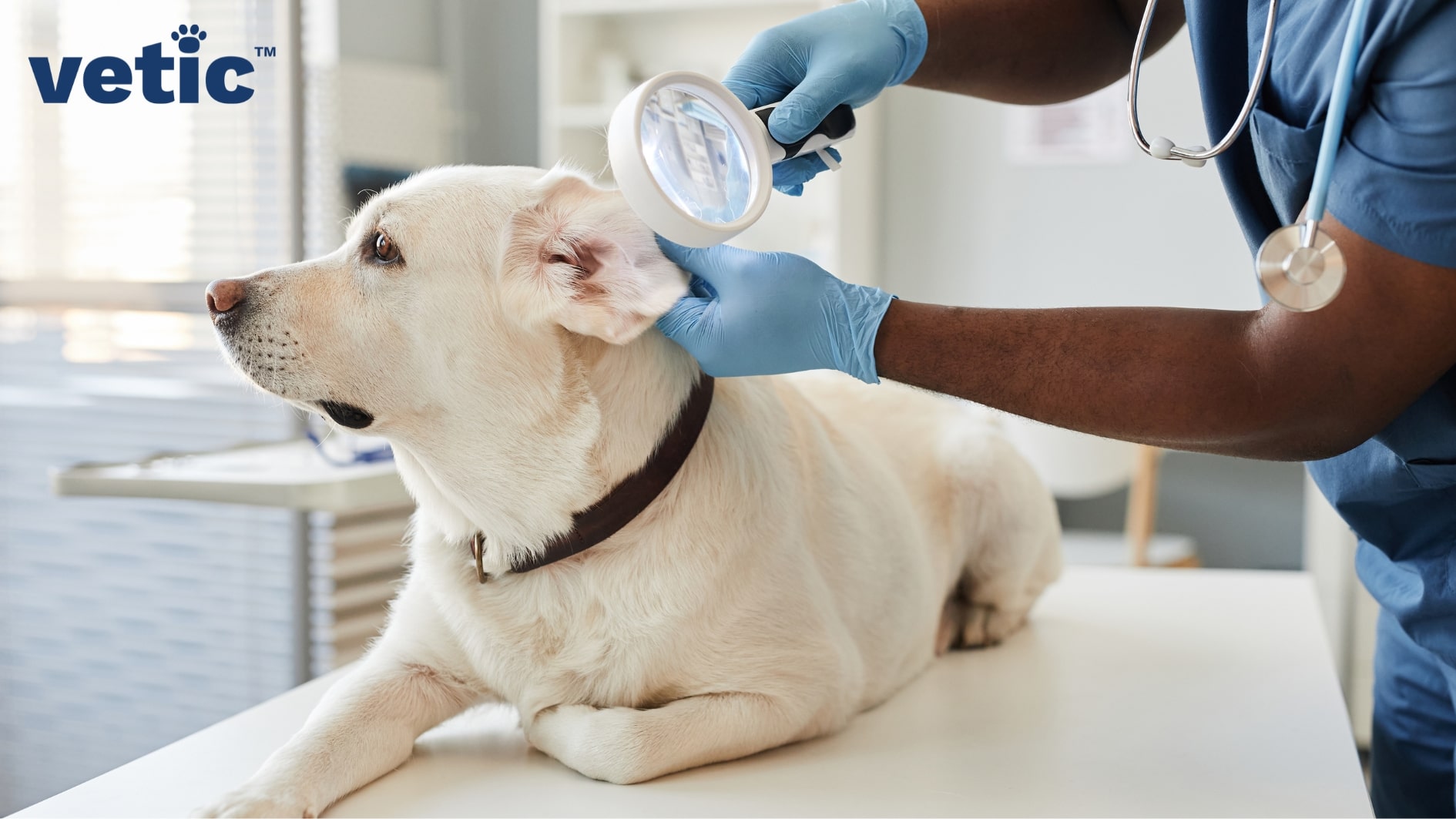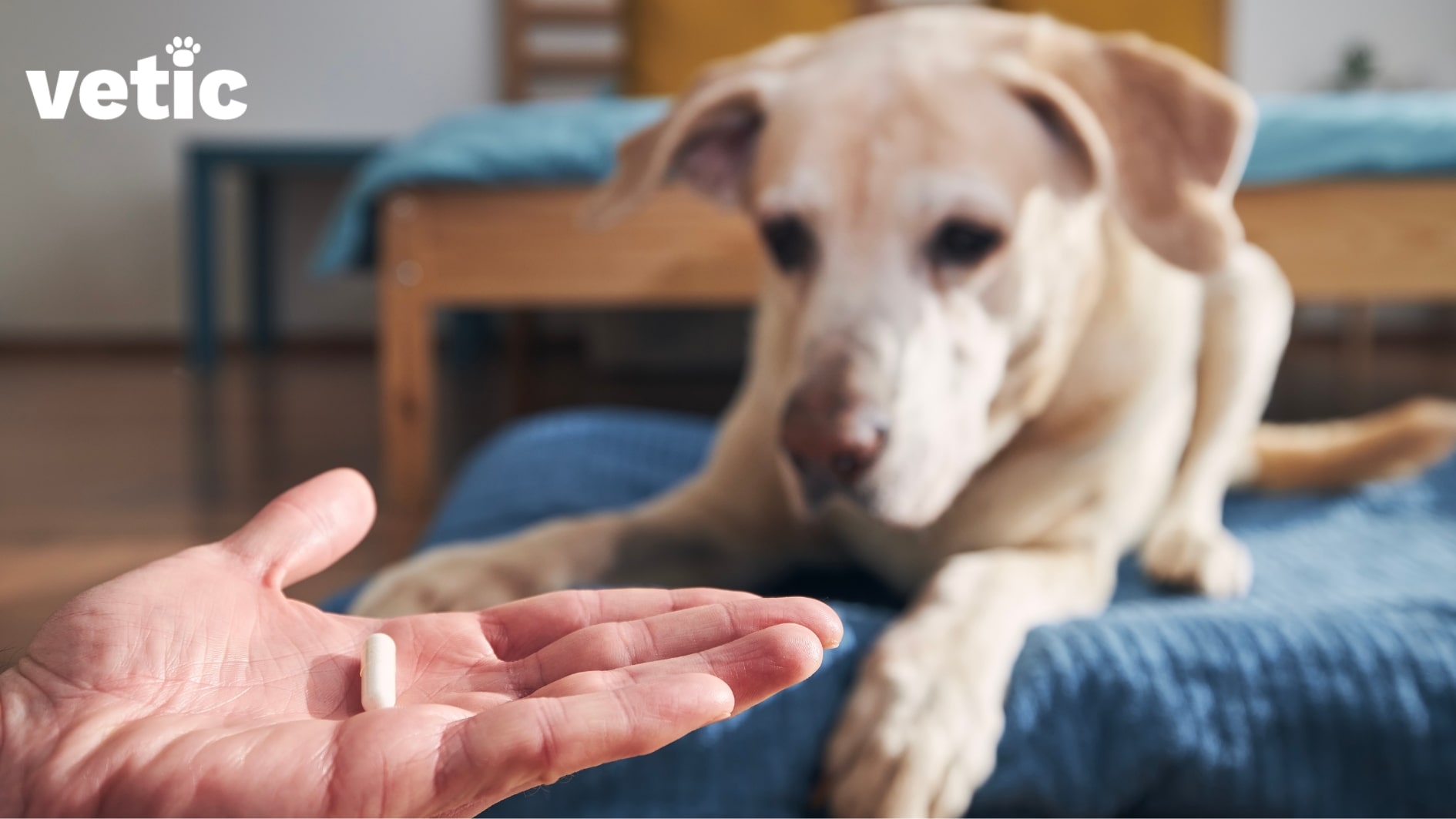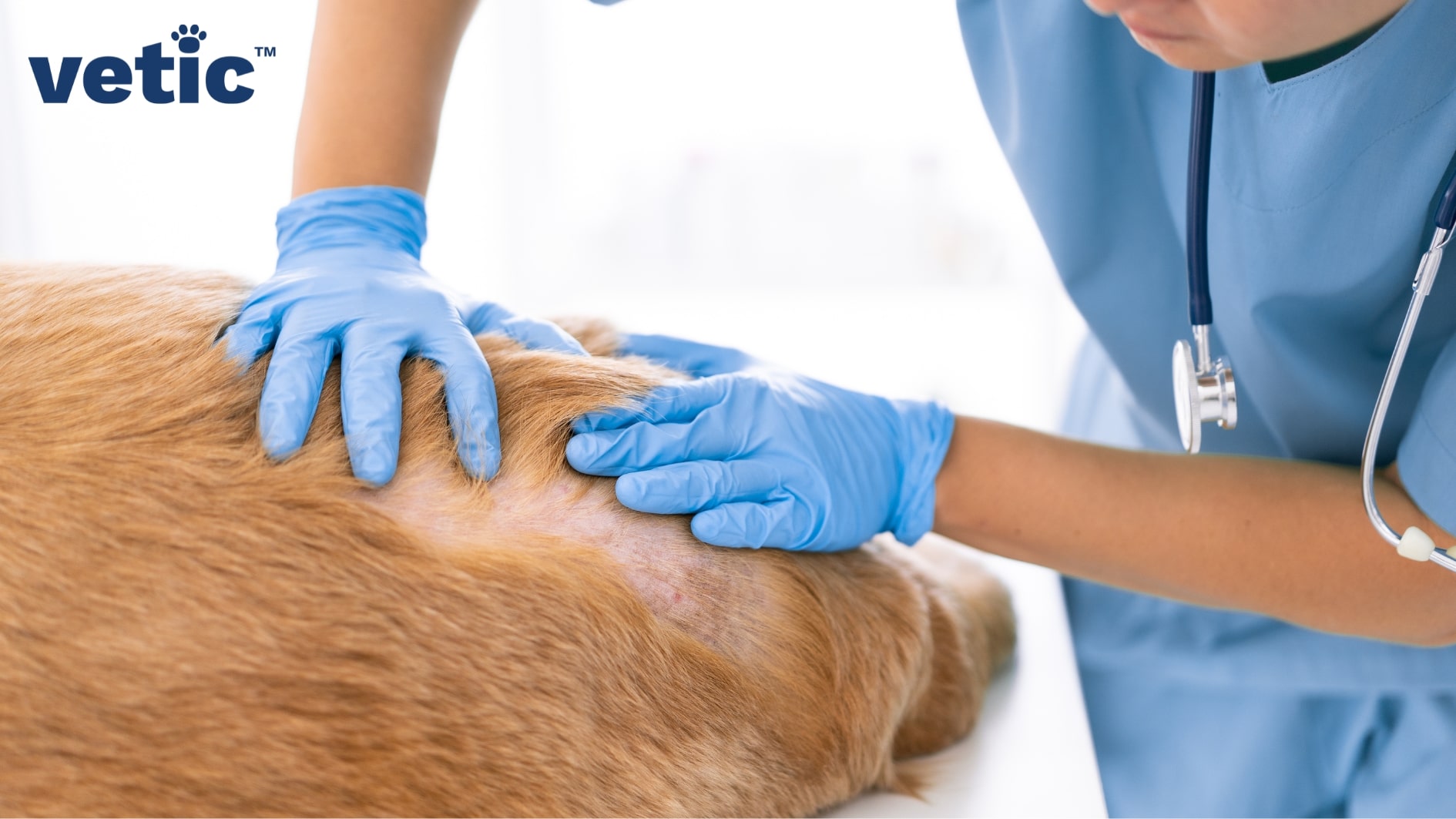Fungal infections in dogs are common in tropical and humid areas. It’s easy to understand why we see so many dogs with fungal skin issues everyday!
If your dog is scratching too much, licking their paws more than usual and giving off a musty odour, it could be a fungal infection of your dog’s skin.
How can Dogs Get Fungal Infections?
Every dog is at risk of contracting a fungal infection since it can come from –
- The environment (soil or home)
- Other animals
- Overgrowth of the natural fungi on their bodies
What are The Signs of Fungal Infections?
Some of the telltale signs of fungal skin infections in dogs include –
- Scaly or flaky skin
- Redness of the skin
- Itchiness
- Musty odour
- Thickening of the affected areas
If your dog has one or more of these symptoms, consult a veterinarian near you. Fungal infections of the skin are very common among dogs in Mumbai. The Vetic Pet Clinic in Thane sees around 5-8 cases of fungal infections of the skin each week among dogs of all breeds.
The Three Most Common Fungal Skin Infections Seen In Dogs In India
We see the three most common types of fungal infections of the skin among dogs in India. Let’s explore the types and their treatment right here –
1. Yeast Dermatitis Or Malassezia
It is a common fungal infection of the skin among almost all dog breeds.
Causes of Yeast Dermatitis in Dogs
Yeast dermatitis happens when the fungus normally found on the dog’s skin experiences an abnormal overgrowth.
The overgrowth can be due to increased oil production on the skin. It commonly follows chronic allergic reactions (involving the skin) in dogs.
Common Signs Of Yeast Dermatitis In Dogs
- Itching and redness
- Musty odour
- Scaly skin
- Hyperpigmentation
- Recurring ear infections (internal and external)
Yeast dermatitis in dogs is not contagious or zoonotic. Some dog breeds are more prone to yeast infections as compared to others, such as Chihuahua, Poodle, Basset Hound, Cocker Spaniel, Lhasa Apso and Dachshund.
Diagnosis Of Yeast Dermatitis In Dogs
Several techniques are there to confirm a Malassezia infection in dogs. The commonly available techniques we use include –
Skin Scraping for Yeast Dermatitis
The affected area is scraped to collect the sample. It is stained and simply observed under a light microscope.
If yeast is present in the sample, they are clearly visible. A veterinary pathologist can easily identify and confirm the diagnosis within a couple of minutes.
Treatment Of Yeast Dermatitis In Dogs
The treatment of yeast dermatitis in dogs depends upon the severity of the infection. Veterinarians can recommend topical, oral or a combination of both medicines.
Topical Treatment for Malassezia
Topical treatment includes medicated shampoos to remove the excess skin oil if your dog has greasy skin. Then a treatment with special shampoos can eliminate the fungi as well as other parasites (such as mites), which can further irritate the skin.
In particular cases, fungal infection isn’t the only cause of itchy, flaky and irritated skin. Many dogs have fungal infections in conjunction with bacterial infections. They will require a combination of ingredients in the shampoo that can address skin irritation and multiple infections.
The treatment may require between two to twelve weeks depending upon how long your dog has been experiencing these symptoms and how far the infection has spread.
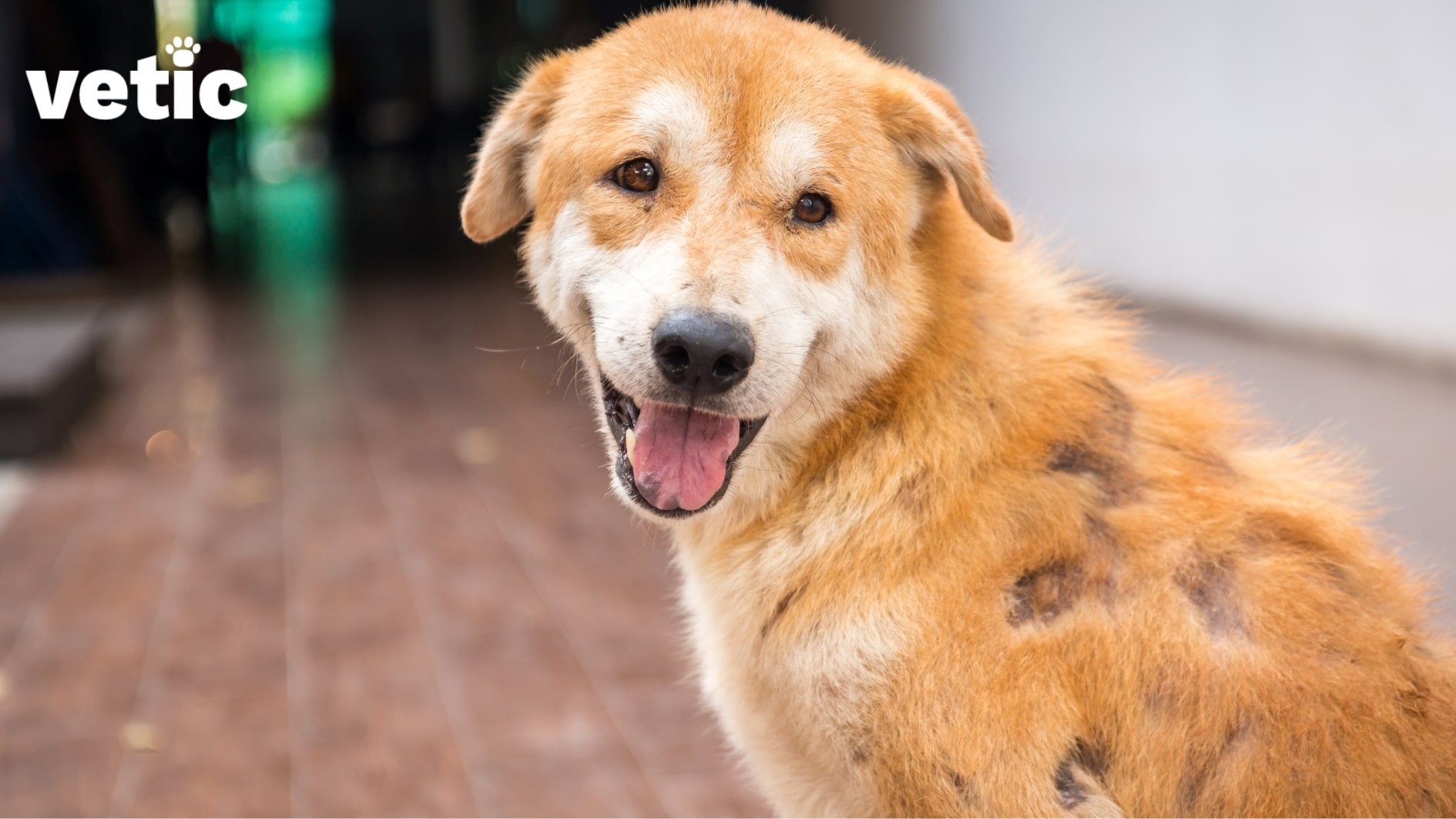
Oral Treatment for Yeast Dermatitis
You should NEVER start oral antifungal medication without consulting your veterinarian. Your vet might request additional blood and biochemistry tests before they begin any oral medicine for the treatment of yeast dermatitis.
These tests are absolutely mandatory for oral treatment since the medicines for the treatment of Malassezia can continue for several months.
Can Your Dog Recover From Yeast Dermatitis?
The treatment for yeast dermatitis demands lots of patience and persistence in some cases. However, the prognosis is always good.
The itching and redness typically go down within a couple of weeks, but you shouldn’t stop the medication before your veterinarian recommends it.
Your dog may need a special diet or skin supplement to minimise any allergic symptom that triggers the yeast infection. Nonetheless, the condition is treatable and completely curable in every dog breed.
2. Ringworm Or Dermatophyte Infection In Dogs
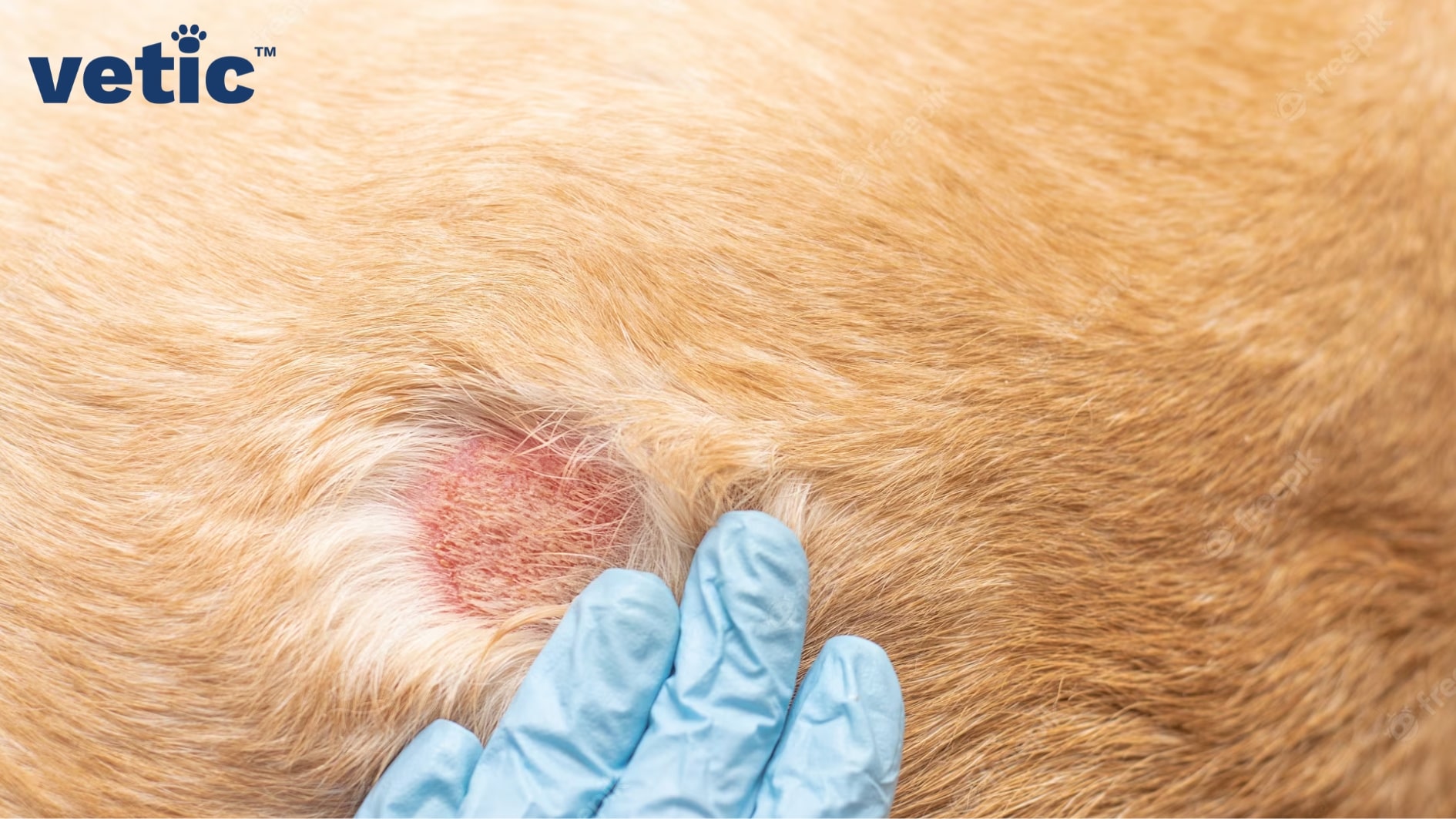
Ringworm infection in dogs is another common fungal skin infection among all dog breeds in India. We see it quite frequently in brachycephalic breeds or flat-faced breeds, such as Pug, Shih Tzu, and Pomeranian. It is also more common in older dogs with poor skin conditions.
Ringworm is a common fungal infection that affects the skin, hair and nails of a dog. It can also affect other animals and humans who come in contact with the infected dog.
The Signs Of Ringworm In Dogs
- The classical round, red and ring-marked lesions on the skin
- Circular areas with hair loss
- Inflamed skin
- Dry and brittle hair
- Brittle and rough claws
Rarely, dogs can have asymptomatic ringworm infections. They can infect other animals and humans without showing any signs of skin irritation.
How Does Your Dog Get A Ringworm Infection?
Ringworm is caused by dermatophytes and the infection is highly contagious. Your dog can catch a ringworm infection from other dogs, humans and contaminated objects.
Ringworm spores remain intact on surfaces and objects, such as combs, furniture, food bowls, bedding, carpets and brushes for longer than one year.
Diagnosis Of Ringworm In Dogs
Skin areas infected with ringworms may glow under UV lamps in particular cases. In other cases, skin and hair scrapings are necessary to confirm the presence of ringworms or dermatophytes.
What Is The Treatment Of Ringworm In Dogs?
The most common treatment for ringworm in dogs is a combination of topical and oral therapy.
Topical Treatment Of Ringworm or Dermatophytes in Dogs
Topical treatment includes antifungal baths/shampoos, creams and ointments. In the case of ringworm or dermatophyte infection in dogs, topical treatment is rarely used alone.
Various cream and ointment combinations are used together with oral medication to control the fungal skin infection in dogs.
Proper grooming is a significant part of the topical treatment of ringworm in dogs. Your veterinarian may recommend shaving a part of the affected areas or all of your dog’s hair depending on the extent of the infection.
Treatment may continue for several months and it is imperative to never miss a dose during this time. Get your dog groomed professionally at least twice a month to keep their skin and coat clean, and keep a close eye on their skin condition.
Oral Treatment Of Ringworm
Effective treatment of ringworm in dogs includes oral medicines. Antifungal drugs with minimal side effects are chosen since they can continue for several weeks to several months.
Do not stop the therapy before the veterinarian gives you the green signal. Otherwise the fungal skin infection will occur again. The treatment typically lasts between six and eight weeks.
Environmental Cleaning
Dermatophytes can remain dormant for several months on inorganic surfaces. Therefore, clean your dog’s beddings, food bowls, collars and leashes, brush, toys and every corner of your home to prevent recurrences.
Restrict their contact with other animals and humans to reduce the risk of cross-infection.
Is Ringworm Infection In Dogs Curable?
When diagnosed and treated at the correct time, ringworm infection in dogs is treatable and curable. That is one reason we recommend frequent check-ups of all dogs irrespective of their health condition.
Symptoms often recur when the treatment is stopped prematurely. Or, if the dog has an underlying immunodeficiency disorder.
If the infection and its signs persist even after 2-3 weeks of treatment, speak to your veterinarian.
3. Candida Infection In Dogs
Candida is another rather common fungal skin infection in dogs in India. Around 70% of all fungal infections diagnosed via skin scraping and biopsies at the Vetic Pet Clinic Thane point towards Candida as the causal microorganism.
Candidiasis is a localised, fungal skin infection that affects the skin, but it can also affect the mucous membranes and gastrointestinal tract.
Signs Of Candida Infection In Dogs
- Skin lesions
- Recurring ear infections (shaking and scratching of heads)
The symptoms vary depending on the location of the candida infection.
Causes Of Candidiasis In Dogs
The causes remain multiple. Some existing conditions make some dogs more prone to candida infections, including-
- Break of the skin barrier due to excessive scratching, allergies, dermatitis, or burns
- Immune suppression
- Diabetes
Diagnosis Of Candida Infection In Dogs
Skin lesions can call for biopsies. We have in-house diagnostics to collect tissue samples and conduct biopsies on the same day to check if your dog has a candida infection.
The veterinarian may also recommend a complete urine analysis to check if your dog also has a candida infection in their urinary tract. Since it is extremely common among dogs who have candida skin infections.
Treatment Of Candidiasis In Dogs
The treatment of candida infection in dogs varies from case to case. It may involve strengthening the skin barrier and reducing the fungal load. That implies the use of oral supplements along with antifungals and skin ointments.
Co-existing disorders, such as diabetes and hormonal disorders need close monitoring and management for the control of this fungal infection in dogs.
Is Candida in Dogs Curable?
Early diagnosis plays a significant role in the outcome of candida infection in dogs. The treatment duration can be extensive, but you need to be patient and never miss a dose of the prescribed medication and supplements.
The treatment can take between one and two months. And medications should be continued for at least two weeks after all symptoms have subsided. Speak to your dog’s doctor before you stop the medication.
How To Prevent Fungal Infections In Dogs?
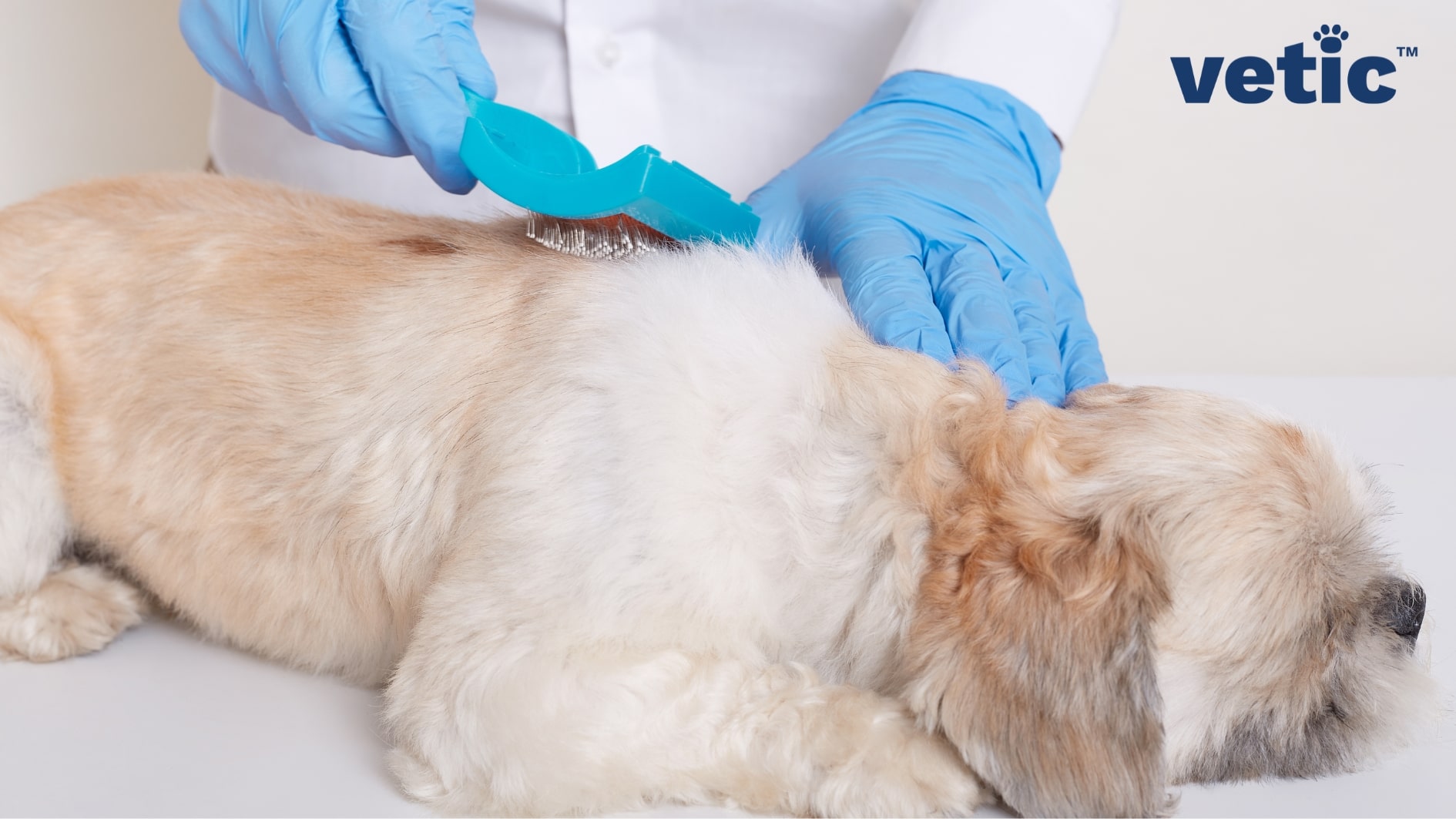
Preventing fungal skin infections in dogs is quite challenging in this climate. However, you can take the following steps to minimise their risk of acquiring one –
- Groom them periodically at professional grooming places
- Take them for regular veterinary check-ups
- Give them the necessary supplements as recommended by your veterinarian
- Keep an eye out for parasites such as fleas and ticks to prevent allergic dermatitis
- Follow a diet plan that’s healthy for your dog’s skin and immune system
- Keep your dog away from other animals that show signs of skin issues
Contact your veterinarian without delay if your pet is scratching and shedding more than usual. It’s always better to get their skin condition checked before any of the symptoms become serious and begin interfering with the quality of their life.


